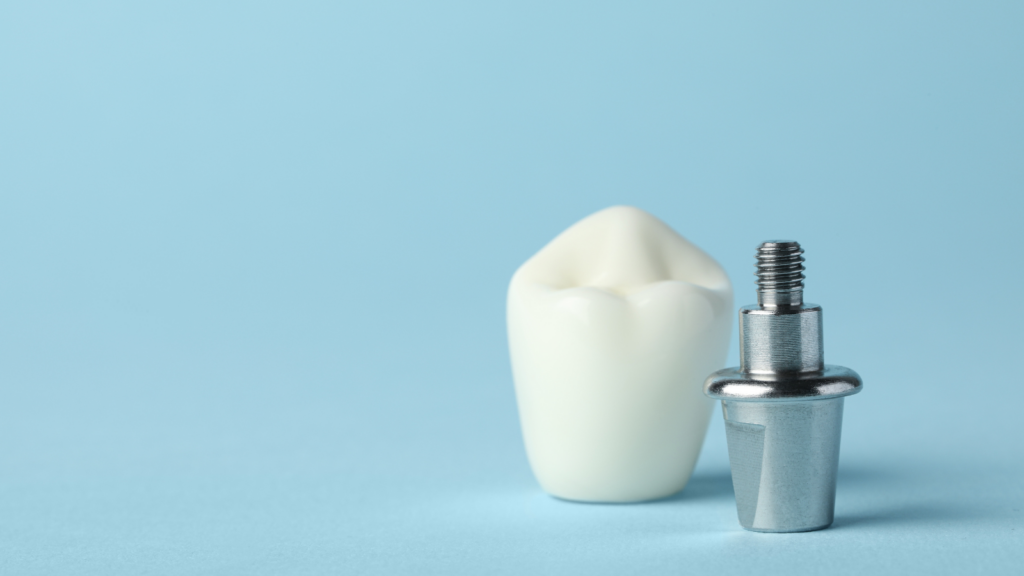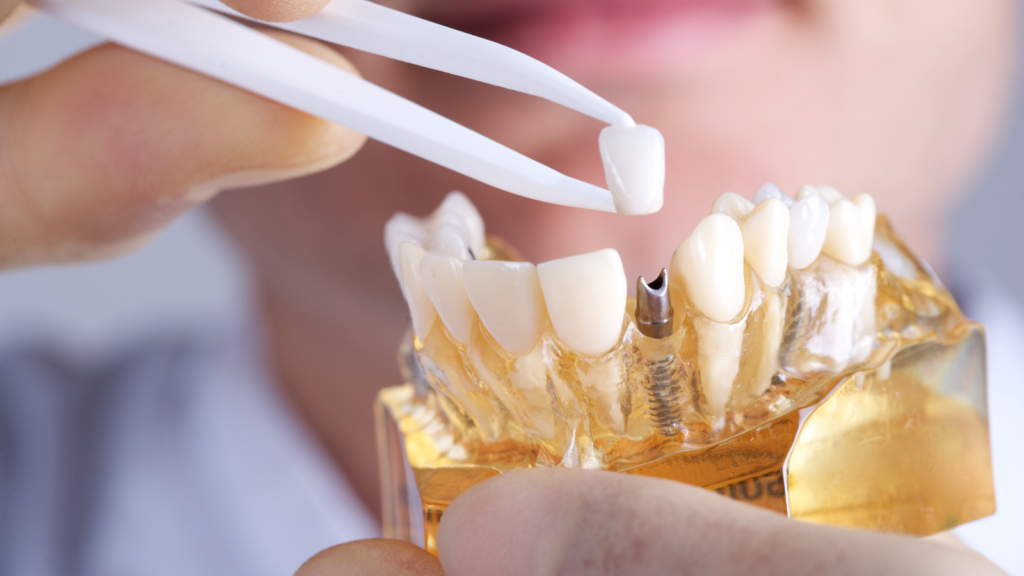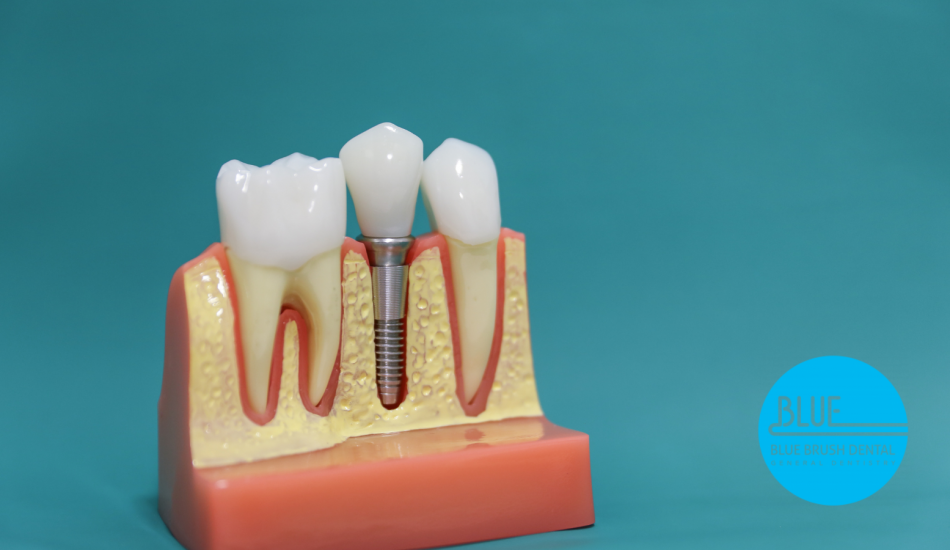Struggling with missing teeth or loose dentures can significantly affect your confidence and quality of life. As a form of solution, dental implants offer a promising answer, providing a secure and long-lasting replacement for missing teeth. However, many worry about how long these implants will last and what factors might affect their durability.
In this guide, we will explore the expected lifespan of dental implants and the factors contributing to their longevity. We will also share practical tips on how to keep its longevity better and longer.
What Determines the Lifespan of Dental Implants?
The lifespan of dental implants depends on various factors, including the materials used, the skill of the surgeon, and the patient’s oral hygiene habits. Understanding these elements can help you make informed decisions and take the necessary steps to extend the longevity of your implants.
Defining Dental Implants and Their Components
Dental implants are sophisticated dental devices designed to replace missing teeth, offering a permanent solution that mimics the appearance and function of natural teeth. Each implant comprises several vital components that provide stability and aesthetics. These components include:
- Implant Fixture: The implant fixture is a small post surgically inserted into the jawbone, usually made of titanium or zirconia. This post acts as an artificial root and integrates with the bone through osseointegration.
- Abutment: The abutment is a connector piece attached to the implant fixture. It protrudes above the gum line and serves as the base for the crown.
- Crown: The crown is the visible part of the implant that resembles a natural tooth. It is typically crafted from ceramic or porcelain materials for a realistic appearance and is custom-made to match the patient’s surrounding teeth.
- Optional Components: In some cases, additional components, such as healing caps or temporary crowns, may be used during the healing process to protect the implant site.
Each component plays a crucial role in the overall functionality and success of the dental implant. The choice of materials and the precision of the design are critical to ensuring the long-term durability of the implant system.
Average Lifespan of Dental Implants Based on Clinical Studies
Clinical studies consistently demonstrate that dental implants have a high success rate, often maintaining their functionality for many years. On average, dental implants can last between 10 and 15 years, with many lasting significantly longer when properly cared for. Research indicates that the implant fixture, once integrated with the jawbone, can remain stable indefinitely, barring complications or health issues. However, due to normal wear and tear, the crown may require replacement after a decade or more. Factors such as the patient’s health, the quality of the implant materials, and the dental surgeon’s expertise all play significant roles in determining the longevity of dental implants.
Key Factors Influencing Implant Longevity
Dental implants’ success depends on factors affecting surgery outcomes and long-term durability. Being aware of these factors can help patients take proactive steps to ensure the longevity of their implants. These factors mainly involve:
- Bone Quality and Quantity: Adequate bone density and volume are essential for successful osseointegration. In cases of bone deficiency, procedures like bone grafting may be necessary.
- Oral Hygiene: Maintaining excellent oral hygiene is critical for preventing infections and complications such as peri-implantitis, which can compromise implant stability.
- Surgeon’s Expertise: The dental surgeon’s experience and skill are vital for proper implant placement and reducing the risk of complications.
- General Health: Conditions such as diabetes, osteoporosis, and smoking can affect healing and implant success. Managing these conditions is crucial for implant longevity.
- Regular Follow-up Care: Routine dental check-ups with an emergency dentist can help monitor implant health and address any emerging issues promptly.
The combination of these factors influences the overall success rate of dental implants and their ability to last a lifetime. Patients who follow recommended care guidelines and maintain regular dental visits are more likely to enjoy long-lasting implant results.
How Do Different Parts of Dental Implants Contribute to Their Longevity?

The longevity of dental implants depends significantly on the durability and performance of their components. Each part of the implant system plays a distinct role in ensuring stability and functionality, contributing to the overall success and lifespan of the implant.
Durability of the Implant Fixture and Osseointegration Process
The implant fixture is the foundational component of a dental implant, and its durability is crucial for its long-term success. Made primarily from titanium or zirconia, the fixture is designed to integrate with the jawbone through osseointegration. This process involves the bone growing around the implant, securing it in place, and creating a stable base for the abutment and crown.
Successful osseointegration is vital for the implant’s stability and resistance to the forces of chewing and biting. Factors such as bone quality, surgical technique, and post-operative care all influence the osseointegration process. Patients with adequate bone density and volume typically experience better outcomes, while those with insufficient bone may require additional procedures like bone grafting to ensure proper integration.
Lifespan of the Abutment and Potential Issues
The abutment serves as the intermediary between the implant fixture and the crown, and its lifespan plays a significant role in the overall durability of the dental implant. Typically made from titanium, zirconia, or gold, the abutment is designed to withstand the pressures of daily use while providing a secure connection for the crown. While abutments are generally durable, potential issues such as loosening or fracturing due to excessive force or improper alignment can arise.
Routine dental check-ups are essential to monitor the abutment’s condition and ensure it remains securely attached to the fixture. In some cases, adjustments or replacements may be necessary to address any issues and maintain the integrity of the implant system. The quality of the abutment material and precision in its placement are critical factors that affect its longevity and performance.
Crown Durability and Replacement Frequency
The dental crown is the visible part of the implant, designed to mimic the appearance and function of a natural tooth. Made from materials such as porcelain or ceramic, crowns are crafted to withstand chewing and biting while providing a natural-looking smile. However, over time, normal wear and tear can necessitate crown replacement. On average, dental crowns need replacement every 10 to 15 years, though this can vary depending on factors like diet, oral hygiene, and the precision of the original placement.
Patients who maintain good oral hygiene and avoid habits that cause excessive stress on the crown, such as teeth grinding or biting complex objects, can often extend the lifespan of their dental crowns. Regular dental visits are also crucial for monitoring the condition of the crown and ensuring it remains in optimal shape, which in turn contributes to the overall longevity of the dental implant.
How Do Complications Affect the Lifespan of Dental Implants?
Complications can significantly impact the lifespan of dental implants, potentially leading to failure if not addressed promptly. Understanding these complications and their management is essential for ensuring the longevity and success of your implants.
Peri-implantitis: Causes, Symptoms, and Treatment
Peri-implantitis is a common complication that affects the soft and hard tissues surrounding a dental implant. It is an inflammatory condition similar to periodontitis that can lead to bone loss and implant failure if not treated promptly. The primary causes of peri-implantitis include poor oral hygiene, a history of periodontal disease, and smoking. These factors contribute to the accumulation of plaque and bacteria around the implant, leading to inflammation and tissue damage.
Critical pointers to take note of for this complication include:
- Causes: Poor oral hygiene, smoking, and history of periodontal disease.
- Symptoms: Redness, swelling, bleeding, and deep pockets around the implant.
- Treatment: Involves mechanical debridement, antimicrobial therapy, and possibly surgical intervention.
Treatment for peri-implantitis focuses on controlling the infection and promoting healing of the affected tissues. Initial treatment typically involves mechanical cleaning to remove plaque and calculus from the implant surface and antimicrobial therapy to reduce bacterial load. In more severe cases, oral surgery may be necessary to regenerate lost bone and soft tissues. Early detection and intervention are crucial for preventing long-term damage and preserving the implant’s health.
Risks and Prevention of Implant Fracture and Wear
Implant fracture and wear are less common but serious complications that can compromise the longevity of dental implants. Fractures can occur due to excessive force, improper implant placement, or material defects. Wear is typically seen in the prosthetic components, such as the crown, which may require replacement over time. Preventing these issues involves selecting high-quality implant materials and ensuring proper surgical placement. Patients should avoid habits that exert excessive force on the implants, such as teeth grinding or chewing complex objects. Regular dental check-ups are essential for monitoring the condition of the implant and prosthetic components, allowing for early detection of wear or fractures. Addressing any issues promptly can prevent complications and extend the implant’s lifespan.
Long-term Effects of Bone Loss Around Implants
If not addressed, bone loss around implants can severely affect their stability and longevity, leading to implant failure. This condition, often resulting from peri-implantitis or insufficient initial bone integration, can compromise the implant’s ability to withstand regular chewing forces. Bone loss may occur due to systemic factors like osteoporosis or localized issues like inflammation and infection. In severe cases, bone grafting or other oral surgery procedures may be necessary to restore bone density and ensure the implant’s stability. Regular monitoring and maintenance, including professional cleanings and assessments, are critical for detecting early signs of bone loss and implementing preventive measures. Managing systemic health conditions, such as diabetes and osteoporosis, can also contribute to maintaining bone health and supporting the longevity of dental implants.
How to Choose the Best Clinic for Long-lasting Dental Implants?

Selecting the right clinic is crucial for ensuring the success and longevity of your dental implants. At Blue Brush Dental, we prioritize quality care and patient satisfaction, providing state-of-the-art technology and experienced professionals to deliver exceptional implant services.
Evaluating Dentist Qualifications and Experience
When considering a clinic for dental implants, it is essential to evaluate the qualifications and experience of the dental team. Experienced dentists with specialized training in implantology can significantly impact the outcome of your treatment. At Blue Brush Dental, our team of experts is committed to providing top-notch care tailored to your needs.
Some qualifications and experience to look out for are:
- Board Certification: Ensure the dentist is board-certified and holds credentials from reputable dental organizations.
- Specialized Training: Look for additional training or certifications in implantology and related procedures.
- Years of Experience: Consider the dentist’s experience performing implant surgeries, especially complex cases.
- Patient Reviews: Read testimonials and reviews from previous patients to gauge satisfaction and outcomes.
- Continuing Education: At Blue Brush Dental, our dentists engage in ongoing education to stay updated with the latest advancements and techniques in dental implants.
Choosing a clinic with a skilled and experienced team like Blue Brush Dental ensures you receive the highest quality of care and increases the likelihood of successful, long-lasting implants.
Assessing Clinic Technology and Treatment Approaches
Advanced technology and modern treatment approaches are vital for the precision and success of dental implant procedures. Blue Brush Dental utilizes cutting-edge technology, including 3D imaging and digital planning tools, to enhance the accuracy and effectiveness of implant placement. Our clinic adopts minimally invasive surgical techniques, promoting faster healing and reducing patient discomfort. We emphasize personalized treatment plans tailored to each patient’s needs, ensuring optimal outcomes. By selecting a clinic that leverages advanced technology and innovative approaches, you can achieve a more predictable and successful implant experience.
Understanding Warranty and Follow-up Care Policies
Comprehensive warranty and follow-up care policies are essential for ensuring the longevity of your dental implants. At Blue Brush Dental, we offer robust warranty options that cover the implant components and procedures, providing you with peace of mind. Our follow-up care includes regular check-ups and maintenance appointments to monitor your implants’ health and promptly address any concerns. We are committed to supporting our patients throughout their implant journey, offering accessible support and emergency services when needed. Choosing a clinic with a strong warranty and dedicated follow-up care ensures that your investment in dental implants remains secure and successful over the long term.


